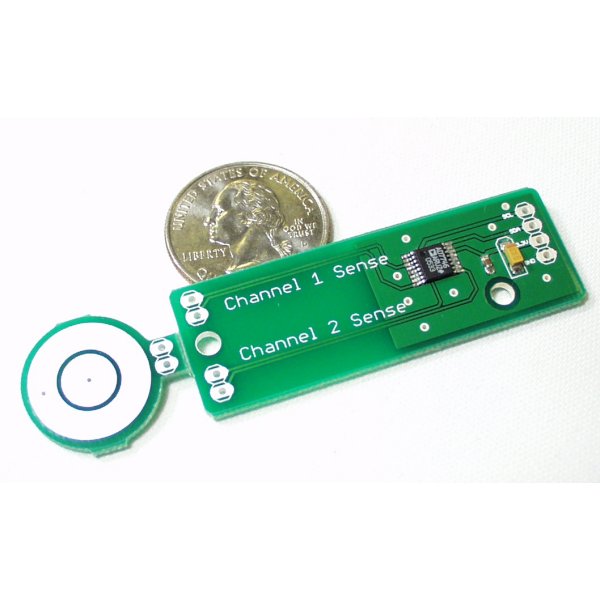×
SparkFun will be closed Nov. 28th and Nov. 29th in observance of Thanksgiving. Any orders qualifying for same day shipping placed after 2:00 p.m. MST on Wednesday, Nov 27th will be processed on Monday, Dec 1st. Wishing you a safe and happy holiday weekend from all of us at SparkFun!
Capacitive Sensor Board - AD7746 Breakout
Replacement:SEN-10250. We now carry the MPR121 capacitive touch sensor. This page is for reference only.
Breakout board for the Analog Devices 7746 capacitance sensor. Configured for two channels of single-ended capacitance input. Comes with an example touch sensor as well as long capacitance creating traces. Useful as a complete I2C interfaced touch sensor, or as a capacitance measuring tool.
- 2.2" x 0.75"
- AD7746 Breakout Schematic
- AD7746 Data Sheet (reference only)
- Analog Devices website (current datasheets)
- Example I2C project
Comments
Looking for answers to technical questions?
We welcome your comments and suggestions below. However, if you are looking for solutions to technical questions please see our Technical Assistance page.
Customer Reviews
No reviews yet.


Even though this product has been retired, would you please be able to put up the Eagle board layout or Gerber files for this? I am having a bit of trouble creating the touch sensor portion using Eagle.
This chip is better suited as a capacitance sensor, not a plug and play capacitive touch button. If you want to integrate a capacitive touch button into a project, id recommend the "MPR121 Capacitive Touch Sensor Breakout Board" which has touch recognition built into the chip.
This chip requires you to write your own touch recognition algorithm.
Does the rotary sensor break away from the rest of the board??? And can I place plastic in front of it to hide it, and still have it run correctly?
That's not a rotary sensor though, it's a differential capacitive sensor
Yep, it's scored and comes off very easily.
I don't have one of these but in the photo it looks like the sensor is V-scored where it attaches to the main board, so it would be easy to snap off. If not a hacksaw or aviation snips will work.
The sensor will work with a thin piece of plastic on top. See Analog Devices AN-854 for an excellent guide to capacitive touch sensing and sensor PCB design: http://www.analog.com/static/imported-files/application_notes/AN_854.pdf
Nate;
Thanks for this breakout board!
And thanks to MarcusInteractive-Matter for doing major part of the leg-work in accessing the chip by putting his Arduino code on the web.
So, how about upgrading this breakout board to allow for differential capacitance sensing (like using both Cin+ and Cin- pins for each channel)?
It will make this board even more versatile...
Thanks!
If you want to hook this baby up with arduino expect some tricky issues. Check my Capacitive Sensing Guide for AD7746 & Arduino